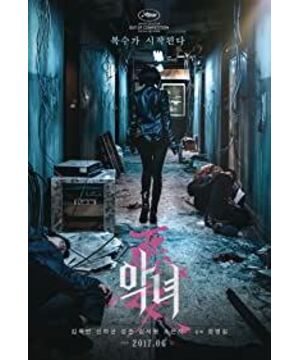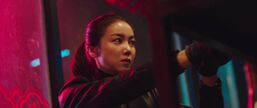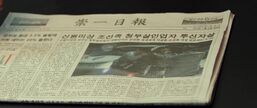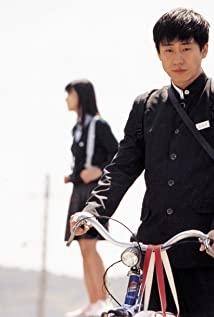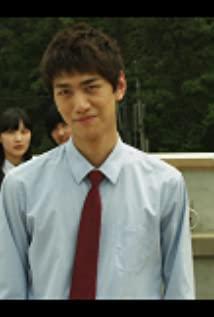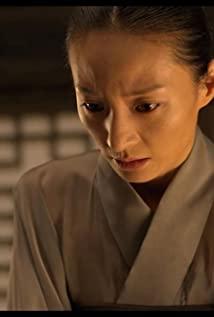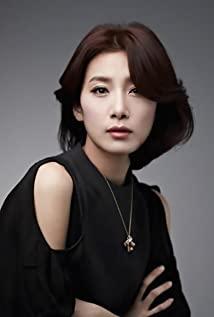The film was created by the film team of the South Korean zombie film "Train to Busan", which was popular last year. In publicity, he unabashedly gave himself an absolutely restricted "gimmick".
Under the Korean rating system, the film was rated as banned by teenagers. Even in this case, the box office still surpassed "Wonder Woman" and broke multiple records.
After watching the fat brother, it can be described as "drama". The world-leading lens language, seamless switching between first-person and third-person perspectives, full of fluidity, and elegant camera movement, it is very addictive. Coupled with the extremely meticulous and poetic metaphors of the melting + jump-cut editing, the whole film is smooth enough to make the hormones overdraft.
The beginning and end of "The Evil Girl", with two magical action scenes, represent the first-class level of the world's movies. Anyway, after watching it, I was stunned.
Reminder, resources are already available!
Send the trailer first to see if you can stand it!
"The Evil Girl" will kill you, frighten you, and shock you as soon as the film starts.
A simple dialogue, the heroine did not appear, and the violence started directly with a first-person POV shot similar to "Hardcore Henry".
Don't drag, just use the most extreme action, the most splattered blood as the motivating event, heat the whole story to boiling point, drag the characters into the vortex of the story, and pull you to pieces with dramatic action.
This 8-minute-long "one shot to the end", dazzling, blood-bloated, and gut-wrenching action scene did not use any obvious segmentation editing, but used follow-up, close-up, and first-person footage similar to VR experience. shoot.
We saw the heroine use pistols, double knives, and flexible body to kill with tricks.
It's amazing not only the very real first-person shots, but also in the shots, we can also see some extremely difficult camera movements, diving, jumping, and special effects shots coming out of the window are all natural. kneaded together.
When the film entered 5 minutes and 17 seconds, the first-person lens announced the return of the heroine's "body" with a symbolic "I in the mirror" split. The first-person POV lens switched to the third-person perspective of God, The audience changes from an immersive "protagonist" to a bystander.
"Wicked Girl" is here to show off her skills! The film is mixed with an extremely untidy direction of camera movement, and even unconventional, anti-gravity, and anti-direction ghost shots in the third-person shots.
Immediately after the heroine appeared for the first time, the 360-degree rotating lens was shot overhead, and the height and angle of the lens were constantly adjusted, making people almost suffocating.
In the shot, the heroine slays the Quartet, desperately resists in the siege, and breaks through the siege by cutting the throat, stabbing the heart, and knocking the brain layer by layer. In the splash of blood and the weightless vertigo, the film elevates the aesthetics of violence to the point of jaw-dropping aphasia. .
Almost every action scene in The Wicked Girl is surprisingly good. The car chase scene of the motorcycle combines the knife and the lens, with a linear sense of direction and scene movement, the fierce hand-to-hand combat and the hot car chase are grafted into a coquettish and solemn form of beauty.
The final climax of the film, under the restraint of the director's repeated shots, suddenly jumped from the slow and gentle third-person fighting scene to the organic switching of POV shots/ghost shots/God shots. .
The combination of movement and stillness, with movement and stillness, pours the whole film into a fluid soul like a gust of wind and grass.
"The Evil Girl" is indeed dazzling, the technique is greater than the story, and the form is far greater than the content.
It fully implements the maxim of the editing master Pudokinfu, uses editing to guide the audience's emotions, and makes filmmakers first and foremost become "the audience's psychological mentor".
Using the speed change of the lens language, the way of presentation of the perspective, and the directional change of the lens movement continue to strengthen, instill a strong inner style, and create the greatest stimulating tension.
It's not just the use of a head-to-tail lens. In the narrative, "Wicked Girl" makes extensive use of the montage methods of overlapping and jumping to present the passage of time and the elasticity of space, interweaving and integrating the stories under two time-spaces, using splits, interrupting the storyline, and renewing the story. The way of arrangement and combination pushes the two stories to an irreversible fateful ending at the same time.
"Wicked Girl" is a story that combines the revenge of "Kill Bill" + the self-splitting mainline of "Nikita". Structurally, the film divides the story into two lines by means of reminiscence episodes.
One is the present of a female agent who entered the National Intelligence Agency and was turned into a major national killer; the other
is a memoir about the past of the heroine who witnessed the murder of her father when she was a child, was accidentally picked up by the killer organization, and cultivated into a killer.
The transition between the two story lines is amazing. Sometimes it's a dream within a dream, sometimes it's a moment of falling into the water, sometimes it's an unpredictable empty shot that jumps directly across the space-time line, allowing the protagonist to blur the reality and fiction, the present and the past with an emotional transformation.
The transition between the pictures is softened by the dissolve, and the audience's emotions are shocked by the jump cut.
"The Evil Girl" is excellent in terms of lens and editing, as well as the structure and form of the story. The cool temperament of Jin Yubin, the heroine who has starred in films such as "Girls High Strange Story 4" and "Bat", is also very suitable for the character image.
However, the middle part of the narrative of "The Evil Girl" was completely drained of power from one end to the other. The powerlessness, procrastination, and emotional transformation of the characters in the middle part of the narrative were all bland and functional.
The three characters in the film are extremely conflicting.
The heroine, constantly struggling in the roles of daughter, lover, wife, and mother, is torn, deceived, and wrongly loved. She loves the wrong person, betrays the wrong person, and can never save the person she loves. After the constant loss, she fell into the hell of eternal reincarnation. The heroine at the end of the film was completely blackened and became the murderous "wicked girl" of the bloodthirsty maniac!
The heroine's first lover, the uncle in her mouth, the father and lover in reality are also full of inner conflict. He is her father-killing enemy, her reborn parents, and her only lover. He had loved her, but his love had atonement, remorse, and betrayal.
The heroine's second lover, dedicates unreserved love, but he met her in the wrong place, his love is deceptive and reserved from the beginning, and can only be declared at the cost of his life The truth of self.
In the human Shura field, the heroine has endured the twists and turns of betrayal or love. She hoped to complete her task as soon as possible, to be an ordinary woman, but unfortunately the strong magnet of fate eventually led her into the narrow door of life without roses and only a bayonet.
"The Wicked Girl" is not perfect. It has a sense of experimental pride. It draws on many classic films in terms of style and story. In the scene where the heroine's father is hammered to death, the killer's whistle, irregular shots, hiding in The perspective of the bottom of the bed is obviously borrowed from "Kill Bill", and the story of the killer's cultivation is borrowed from "Nikita", "Naked Agent" and so on.
But there is no doubt that in terms of technique, "The Wicked Girl" has long been thrown out of the mainland movie street. They are constantly experimenting and discovering new possibilities for the film, and this alone is enough to prove the existence of the gap.
Film is still an extremely young art form, and there are too many possibilities for breakthrough and transformation in all aspects. The classics of the past are preserved in amber balls, but it does not mean that new things will not become the next ones. There is a possibility that the present tense is sealed in amber.
View more about The Villainess reviews


